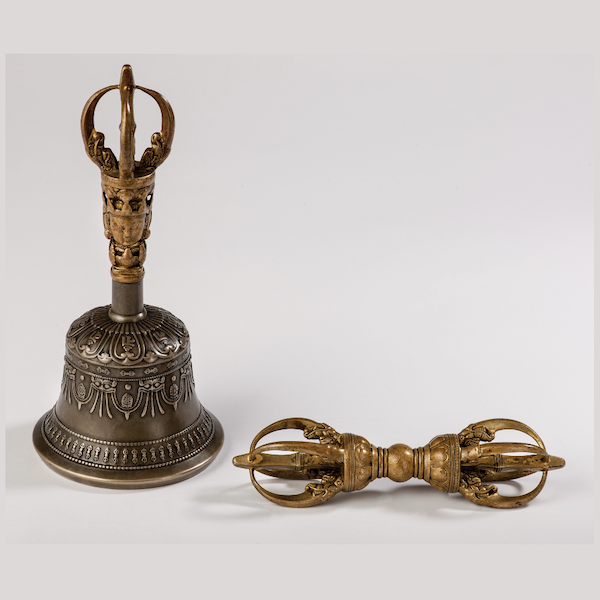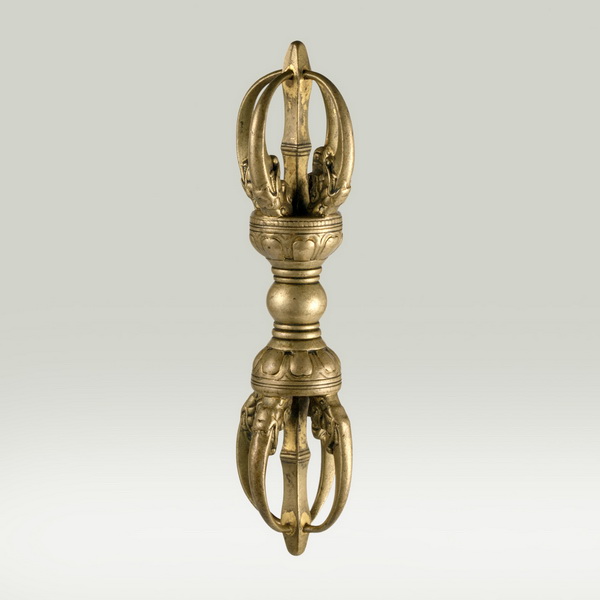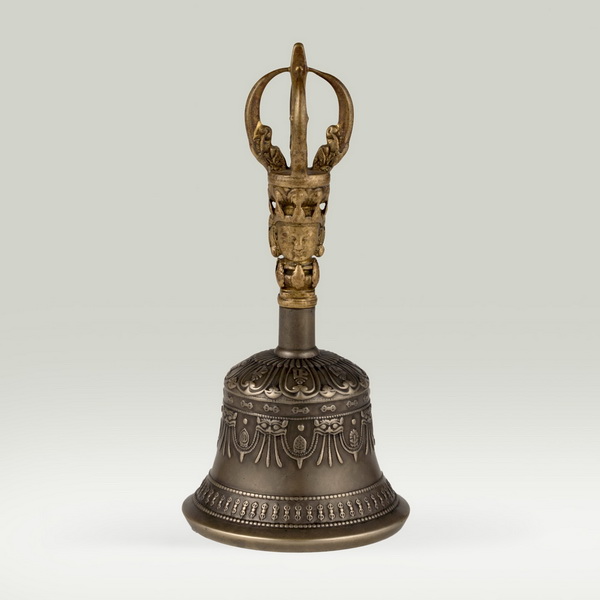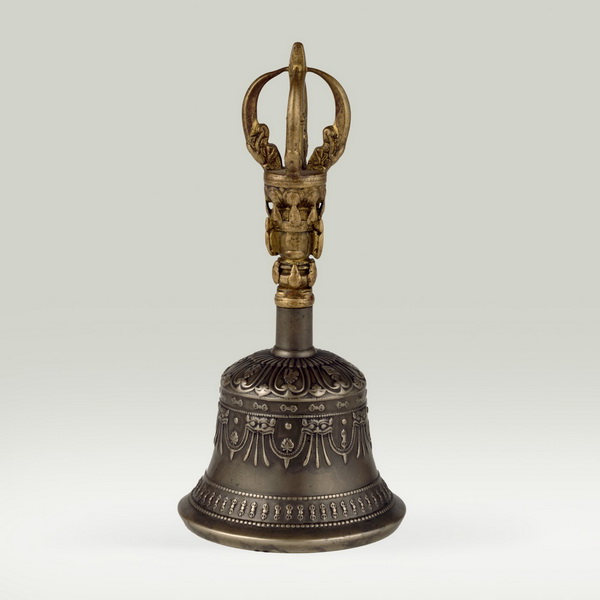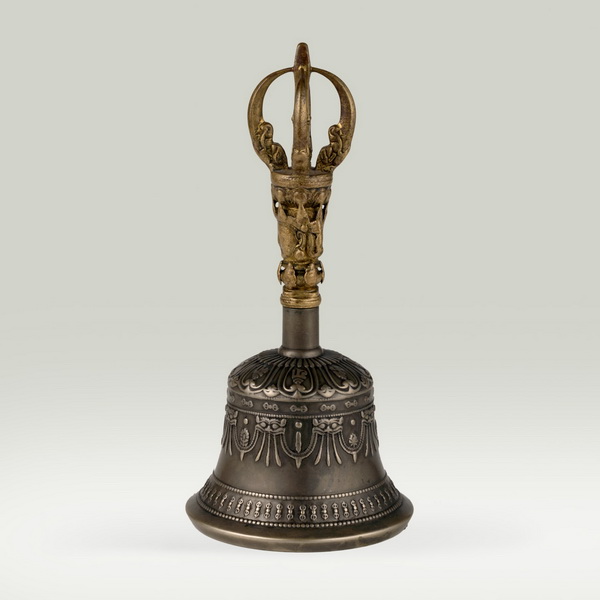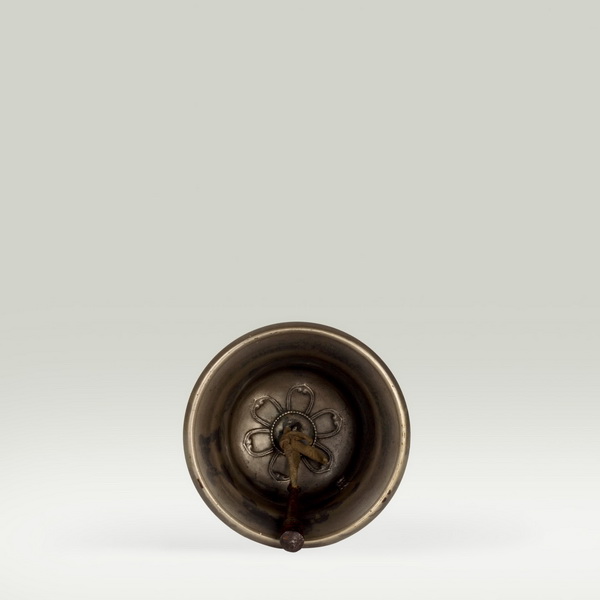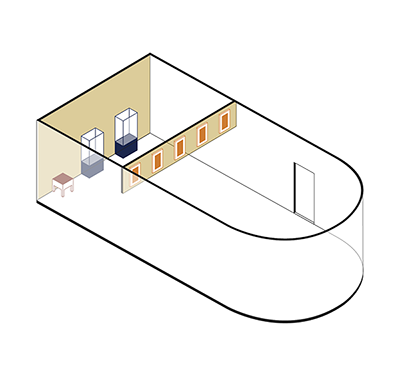ABR 026
Code: ABR 026
Country: Tibet
Style: Sino Tibetan
Date: 1400 - 1500
Dimensions in cm WxHxD: 4 x 17.5 x 4
Materials: Brass
Vajra and bell
The vajra, or dorje in Tibetan, is the most common ritual object in tantric Buddhism, giving its name to Vajrayana Buddhism. Originally designating the thunderbolt, attribute of god Indra, in Buddhism it is the diamond—transparent, luminous and indestructible—like the nature of awakened mind. All vajras share the same overall structure with different elements (sphere, lotus petals, makara dragons, prongs) endowed with deep symbolism. In this example, two sets of five prongs spread out on either side, representing the five mental poisons transformed into the five wisdoms. Some models have one, three, seven, or nine prongs, each with a specific symbolism. Considered a male symbol of "skillful means" allowing to help all beings to progress towards Buddhahood, practitioners always hold it in their right hand.
The vajra-bell handle consists of a half vajra, mounted on the head of the goddess Prajñaparamita, and the vase of longevity. From top to bottom, the body of the bell is covered with the following symbolic elements: eight lotus petals engraved with the syllables of the eight main bodhisattvas, a border of kirtimukha spitting garlands, and a rim of engraved vajra garlands. All symbols refer to the mandala elements. Because of the empty nature of its sound, the bell symbolises emptiness and thus wisdom associated to the female aspect and is held in the left hand.
The vajra, or dorje in Tibetan, is the most common ritual object in tantric Buddhism, giving its name to Vajrayana Buddhism. Originally designating the thunderbolt, attribute of god Indra, in Buddhism it is the diamond—transparent, luminous and indestructible—like the nature of awakened mind. All vajras share the same overall structure with different elements (sphere, lotus petals, makara dragons, prongs) endowed with deep symbolism. In this example, two sets of five prongs spread out on either side, representing the five mental poisons transformed into the five wisdoms. Some models have one, three, seven, or nine prongs, each with a specific symbolism. Considered a male symbol of "skillful means" allowing to help all beings to progress towards Buddhahood, practitioners always hold it in their right hand.
The vajra-bell handle consists of a half vajra, mounted on the head of the goddess Prajñaparamita, and the vase of longevity. From top to bottom, the body of the bell is covered with the following symbolic elements: eight lotus petals engraved with the syllables of the eight main bodhisattvas, a border of kirtimukha spitting garlands, and a rim of engraved vajra garlands. All symbols refer to the mandala elements. Because of the empty nature of its sound, the bell symbolises emptiness and thus wisdom associated to the female aspect and is held in the left hand.

